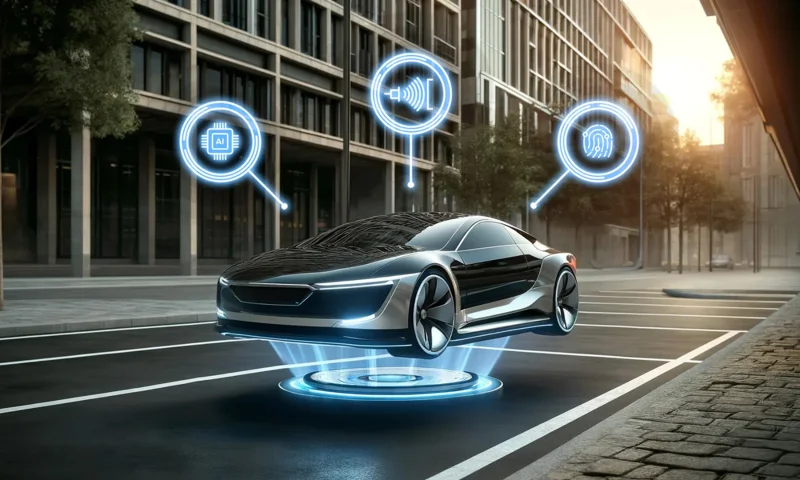How Can Automotive Companies Save Costs Using Tech in 2025?
The automotive industry faces cost pressures in 2025. Rising labor expenses and intense competition from Chinese manufacturers are making the companies find better ways to operate. Traditional methods that worked for decades are no longer sustainable in today’s fast-moving market.
Technology offers automotive companies practical solutions to reduce costs while improving efficiency and competitiveness. From artificial intelligence to IoT sensors, new tools are helping organizations streamline operations, prevent costly breakdowns, and make better business decisions. Companies that embrace these technologies position themselves for long-term success in an increasingly competitive landscape.

The key is understanding which technologies deliver the biggest cost savings and how to implement them effectively. Here are six proven ways automotive companies can leverage technology to cut costs and boost profitability in 2025.
Smart manufacturing and automation reduce production costs
Manufacturing shows are one of the largest cost centers for automotive companies, making it a main target for technology-driven savings. AI-powered automation systems are transforming production lines by optimizing workflows, reducing waste, and reducing human error.
AI systems use computer vision to analyse images and videos captured during production, identifying damage such as scratches, misalignments, or inconsistencies. This automated inspection capability makes sure of consistent quality standards while reducing and decreasing the need for manual quality control staff.
Predictive maintenance prevents costly equipment failures
Unplanned equipment downtime costs automotive manufacturers millions in lost production and emergency repairs. Traditional maintenance approaches rely on fixed schedules that often result in unnecessary work or unexpected failures between service intervals.
This level of prediction accuracy allows companies to schedule maintenance during planned downtime rather than dealing with emergency repairs.
IoT and connected systems optimize supply chain efficiency
Supply chain costs represent a major expense for automotive companies, particularly given the complexity of modern vehicle manufacturing. IoT technology and connected systems give us the real-time visibility that help us with better decision-making and cost optimization.
Connected sensors throughout the supply chain track inventory levels, shipment locations, and production schedules in real-time. This visibility helps companies optimize inventory levels, reduce carrying costs, and minimize stockouts that can halt production. Low costs, supply chain transparency, and minimizing defects can be advantages that digital transformation provides to companies.
Machine learning algorithms analyze historical data and current conditions to predict and study the demand patterns and optimize strategies. These systems can identify the most cost-effective suppliers, negotiate better terms, and reduce procurement overhead through automation.

Transportation optimization uses GPS tracking and route optimization algorithms to reduce and minimize the fuel cost.Fleet management systems monitor vehicle performance and driver behavior to identify opportunities for efficiency improvements.
Digital transformation streamlines administrative processes
Administrative overhead represents a huge cost burden for automotive companies, with many processes still depending on manual paperwork and redundant data entry. Digital transformation initiatives automate routine tasks and eliminate operational inefficiencies.
Cloud-based systems reduce IT infrastructure costs while providing scalable computing resources that adjust to business needs. Companies can eliminate expensive on-premises servers and reduce the IT staff needed to maintain complex systems.
Digital document management systems eliminate paper-based processes and reduce storage costs.
Integration between different business systems eliminates duplicate data entry and reduces errors that require costly correction. Automated reporting provides management with real-time insights without requiring manual data compilation.
Energy management and sustainability technologies cut operational costs
Rising energy costs and regulations are pushing automotive companies to invest in energy management technologies that deliver both cost savings and compliance benefits.
Smart building systems use IoT sensors to optimize heating, cooling, and lighting based on availability and production schedules. These systems can reduce facility energy costs by 20-30% while maintaining optimal working conditions for employees and equipment.
Renewable energy installations like solar panels reduce dependence on grid electricity and provide cost savings.Automakers are working on reducing emissions throughout the supply chain; conserving water through more efficient technologies and water recycling in the factory; and making auto production more energy efficient with renewable power, advanced HVAC, and more.
Energy storage systems enable companies to take advantage of time-of-use electricity pricing by storing power during off-peak hours and using it during expensive peak periods. Battery storage also provides backup power that prevents costly production disruptions during outages.
Waste reduction technologies identify opportunities to recycle materials and reduce disposal costs. AI-powered systems can optimize material usage to minimize waste generation while maintaining product quality standards.
Implementation strategies for maximum cost savings
Start with high-impact, low-complexity projects
Begin with technology implementations that deliver quick wins and build momentum for larger initiatives. Simple automation projects or basic IoT deployments often give immediate cost savings while demonstrating the value of technology investment.

Focus on processes that have clear cost impacts and avoid complex integrations that might delay results. Success with initial projects builds organizational confidence and support for more technology initiatives.
Invest in staff training and change management
Technology implementations fail when employees don’t understand how to use new systems effectively. Comprehensive training programs ensure that staff can leverage technology capabilities fully and realize projected cost savings.
Change management initiatives help employees understand how technology enhances rather than threatens their roles. Clear communication about benefits and career development opportunities reduces resistance and improves adoption rates.
Conclusion
Technology offers automotive companies powerful tools for reducing costs and improving competitiveness in 2025’s challenging business environment. Smart manufacturing, predictive maintenance, AI-powered inspections, IoT optimization, digital transformation, and energy management each provide substantial cost-saving opportunities.
By 2025, AI will no longer be an optional enhancement — it will be a necessity for automakers looking to stay competitive in an evolving global market. Companies that embrace these AI-driven solutions today will be the industry leaders of tomorrow. The investment in cost-saving technologies today positions automotive companies for sustainable profitability and growth in an increasingly competitive industry.
Ti potrebbe interessare:
Segui guruhitech su:
- Google News: bit.ly/gurugooglenews
- Telegram: t.me/guruhitech
- X (Twitter): x.com/guruhitech1
- Bluesky: bsky.app/profile/guruhitech.bsky.social
- GETTR: gettr.com/user/guruhitech
- Rumble: rumble.com/user/guruhitech
- VKontakte: vk.com/guruhitech
- MeWe: mewe.com/i/guruhitech
- Skype: live:.cid.d4cf3836b772da8a
- WhatsApp: bit.ly/whatsappguruhitech
Esprimi il tuo parere!
Che ne pensi di questa notizia? Lascia un commento nell’apposita sezione che trovi più in basso e se ti va, iscriviti alla newsletter.
Per qualsiasi domanda, informazione o assistenza nel mondo della tecnologia, puoi inviare una email all’indirizzo [email protected].
Scopri di più da GuruHiTech
Abbonati per ricevere gli ultimi articoli inviati alla tua e-mail.
